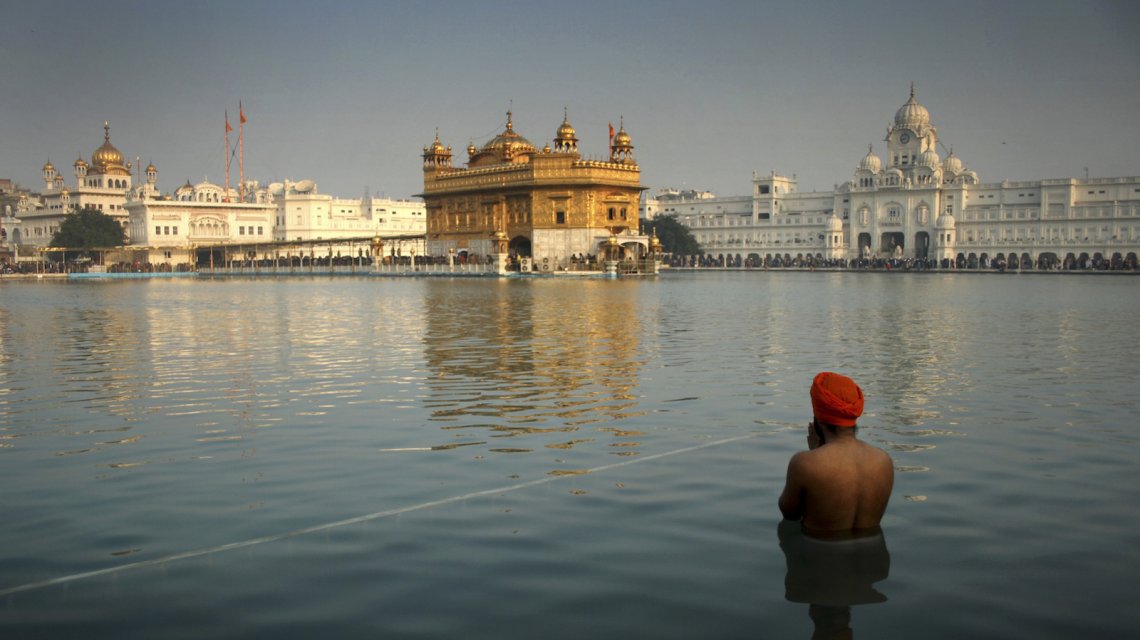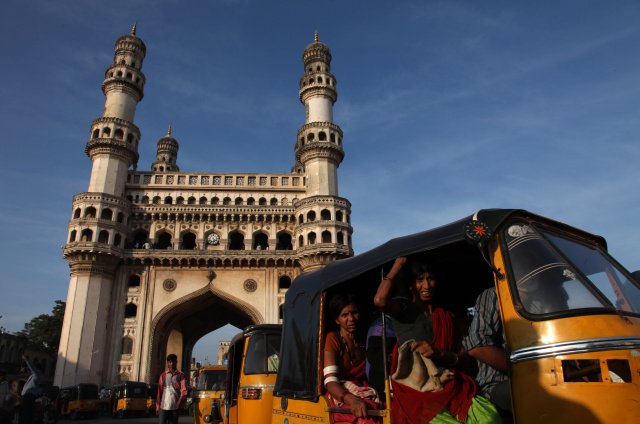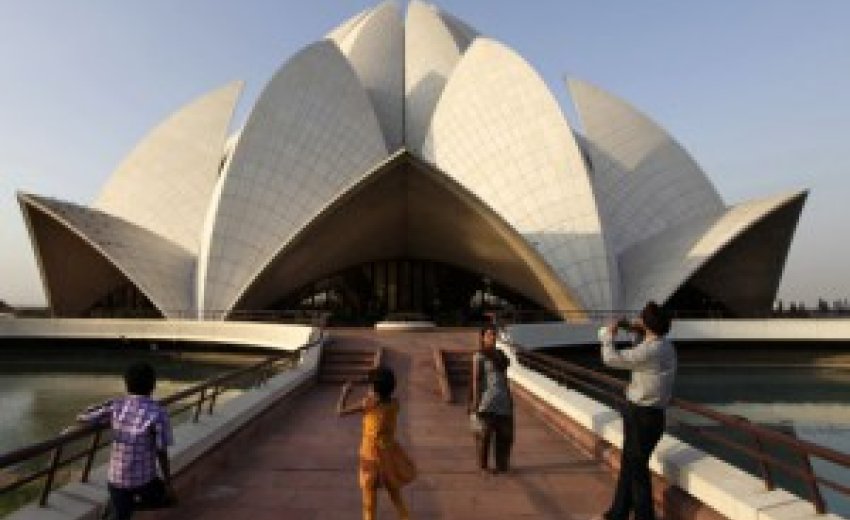 |
| Save it (AP Photo/Sanjeev Syal) |
April 19, 2015: India’s pollution problem, which came into the limelight after Delhi’s air was declared even filthier than Beijing’s last year, is even more monumental than we thought.
Toxic air spouting out from burning trash and exhaust pipes has taken its toll on the facades of some of the country’s sacred heritage sites.
The impact of air pollution on the iconic Taj Mahal—whose grand marble edifice is slowly turning brownish-yellow—has been covered by the media for several years now. But over the last few years, many more sites have joined the queue—their carefully carved and crafted marble pillars of centuries past turning yellow, brown and black.
In Delhi, the white-marbled Lotus Temple, an architectural triumph
and pride of the Bahai faith, is wilting under the onslaught of pollution.
The temple was built in 1986 and attracts 400,000 visitors every month.
But the pristine marble has been fading, despite regular maintenance.
 |
| An Indian family takes photographs in front of the Lotus temple in New Delhi. (AP Photo/Altaf Qadri) |
So badly, in fact, that the entire temple
may look grey in a matter of years,
according to the National Green
Tribunal, an arm of the Indian
parliament that focuses on
environmental issues.
The tribunal found that the major threats to the temple were emissions from cars in nearby traffic, burning rubber and plastic from surrounding slums, and fly ash, a residue of coal of the Lotus temple in New Delhi. (AP ’ 7 combustion, and gas from a nearby power plant, according to the Business Standard newspaper.
“This (discolouration) comes from numerous sources and it’s very specific to the location of the monument,” Hem Dholakia, a research associate at the Council on Energy, Environment and Water, told Quartz. “We need immediate action to prevent further deterioration.”
In the bustling bazaars of Hyderabad’s old city, the central part of one
of southern India’s biggest technology hubs, the 400-year-old landmark
Charminar monument is hit with a similar fate. The layers of dust on
the structure and the movement of vehicles in its vicinity have
contributed to a newfound blackening and gradual peeling of
Charminar’s surface.
 |
| Indian women travel in an autorickshaw in front of the historical monument Charminar in Hyderabad. (AP Photo/Mahesh Kumar A) |
One study from nearby Vardhaman College of Engineering found that
the city’s TSPM (total suspended particulate matter) level, a measure of
dust in the air, was among the highest in the area where Charminar
stands. It also lists which building materials are most sensitive to air
pollution, with marble, limestone and steel at the top of the list.
“India loses $45 billion every year on account of corrosion of infrastructure,” the authors write. “In fact the present situation of historical structures is at critical junction.”
Most heritage sites in India are meant to be protected from pollution under government regulations, like the Ancient Monument and Archaeological Sites and Remains Act 1958, which includes guidelines to “protect places of worship from misuse or desecration.”
The government of Punjab, a heavily developed and industrialised state in the northwest, moved quickly to protect the Golden Temple, the holiest shrine revered by the Sikh religion and community.
In 2013, a study conducted by the Punjab Pollution Control Board and the Indian Institute of Technology in Delhi concluded that traffic, industries and tandoors (ovens) from nearby restaurants had discoloured the main building’s facade and the golden plates affixed on the shrine at the Golden Temple. In fact, even the temple’s own free kitchen was fuelling the problem.
By the end of 2014, the pollution board created a monitoring station at the temple to measure and report high levels of pollution. The state government also deployed electric vehicles, and imposed a ban on cars older than 15 years old in the direct radius of the temple.
While the threat to some of India’s most prized possessions is both vast and complicated, Dholakia said the pride that Indians have in these iconic structures will move people and policymakers to protect these heritage sites.
“People have that emotional connect to these iconic structures,” he said. “I believe this is an important piece, along with the understanding of the risks, that can help galvanise public opinion.”

